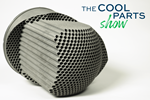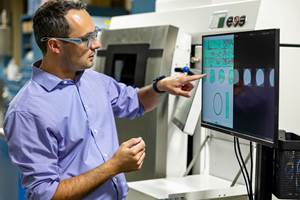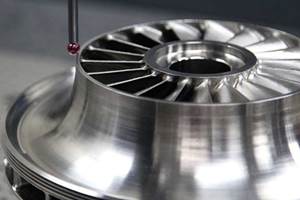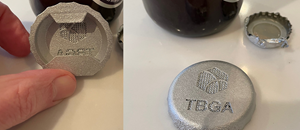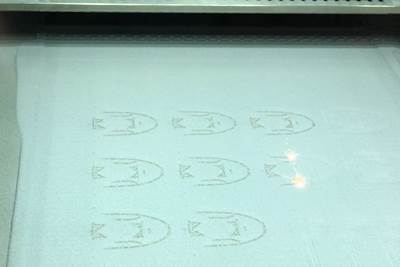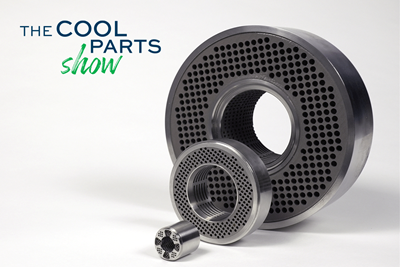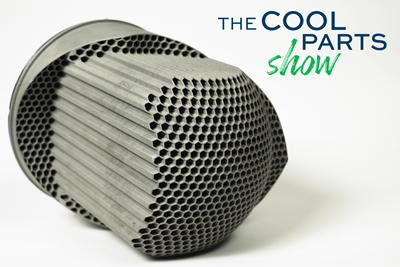Process automation products are regularly re-engineered and redeveloped as digitalization, flow simulation, design and control engineering are constantly studied and improved. Technological innovations, such as those now available with additive manufacturing, open many new opportunities beyond traditional subtractive manufacturing methods. In this case study, Samson will help shine a light on the challenges that companies face when developing pressure equipment product lines manufactured with additive technology.
European Pressure Equipment Directive (PED)
Similar to vessels, piping or unfired pressure vessels, valves and final control elements are classified as “pressure equipment” if they are subject to a maximum allowable pressure greater than 7.25 psi (0.5 bar). Pressure equipment manufacturers must ensure the safety of their products, while also guaranteeing fair competition on the European Union market.[i]
Like the ASME Boiler and Pressure Vessel Code (BPVC) in the U.S., European pressure vessel manufacturers must adhere to European Pressure Equipment Directive 2014/68/EU (PED), which stipulates the relevant manufacturing requirements for EU manufacturers. Specific product requirements are found in Harmonized Product Standards, such as EN 16668 for industrial valves, EN 13480 for metallic industrial piping or EN 13445 for unfired pressure vessels. These standards often reference other supporting harmonized standards when applicable.
The standard requirements apply to both the material properties and the manufacturing procedures. Regular reviews and audits are prescribed for these manufacturing procedures. Products of certain hazard classifications (PED categories I to IV) must additionally be certified by the applicable additional organizations, called Notified Body organizations, and bear a CE marking to be placed on the EU market (similar to a UL certification in the U.S.).


Above: Three-layer print of medium-sized plug heads (150 pieces).
Below: High-load valve trim parts, such as flow dividers.
Source: Samson
Materials Challenges
Designers and manufacturers will normally select the material for a certain part based on standards requirements. This assures that the selected material complies with the applicable safety requirements and technical properties stipulated in the relevant standard, such as ensuring pressure equipment sizing that meets the fundamental safety requirements required by PED or ASME BPVC.
However, the harmonized material standards do not address manufacturing procedures that may affect the material properties (such as welding and forming), nor do they cover whether a material is suitable for a certain device or end-use application. These issues must be evaluated separately by the manufacturer and the customer based on their needs.
Using harmonized materials has enormous benefits when exporting products, ensuring code compliance across jurisdictions. However, one of the major challenges when using additive manufacturing methods is that there are currently no harmonized standards for additively manufactured materials.
“...everybody who makes additively manufactured blanks is considered a material manufacturer according to the language of the PED. […] This is comparable to the process chain involved in manufacturing cast parts.”
A material’s chemical composition is defined by the feedstock (metal powder) used. The metal’s molecular structure and mechanical properties, however, depend on the additive manufacturing procedure applied to make a blank (semi-finished product). As a result, everybody who makes additively manufactured blanks is considered a material manufacturer according to the language of the PED. And those who further process an additively manufactured blank into a finished part or ready-to-be-sold final product are considered equipment manufacturers and distributors of additively manufactured pressure equipment. This is comparable to the process chain involved in manufacturing cast parts. Therefore, other PED-compliant solutions must be applied to harmonized materials and finished products within the meaning of the PED.
Overall Process Requirements
One approach to the lack of standards is to implement the alternative solution stipulated in the PED for materials that are not referenced in harmonized material standards. With this approach, materials are qualified based on a Particular Material Appraisal (PMA). Additional support is provided by prEN 13445-14 (a draft of a standard), DIN TS 17026 (DIN is the German Institute for Standards) and the EN 764-4 and EN 764-5 horizontal standards. Samson has opted to take this approach, as described below.
The PMA is issued by Samson in its role as an equipment manufacturer for every additively manufactured material it uses. In addition to the requirements placed on the essential material coefficients, the PMA contains further data relating to the material, material manufacturer, product type, shape and specific testing and sampling.
To harmonize an additively manufactured material using a standardized PMA, the material specifications of the material manufacturer who made the additively manufactured blank are referenced and the manufacturer must confirm and document compliance with the material specifications by issuing a certificate of specific product testing (3.1 inspection certificate according to DIN EN 10204, or in collaboration with a notified body: 3.2 inspection certificate according to DIN EN 10204).
Additive material manufacturers that want to implement this procedure should be ISO 9001 certified and have a certified quality management system, which has undergone a specific assessment for materials[ii], for example, compliance to Annex I (4.3) of the PED. In addition, the underlying material specifications, and the manufacturing procedure, must be covered by the scope of the material manufacturer’s certification. The material specification could then be viewed or used in the same way that a harmonized material standard could be used, which for this example does not yet exist.
Throughout the entire manufacturing process, material manufacturers must ensure the traceability of the finished products — down to the feedstock batch used. From the beginning of the qualification and certification process, in this example, Samson established a clear separation between the maker of the blank (material manufacturer) and the maker of the pressure equipment (manufacturer and distributor of the equipment).
This enables Samson to procure the additively manufactured blank from a PED-certified material manufacturer, and further process this blank and market it as a PED-certified equipment manufacturer.
Because Samson is also a certified additive material manufacturer, the company can manage the entire process in-house — from procuring the metal feedstock to delivering a finished valve.
According to Article 4 (3) of the PED, manufacturers may only market pressure equipment operated at a very small gauge pressure or having very low pressure and volume, provided the equipment was designed and manufactured in accordance with sound engineering practices.
In most valve applications, the pressure equipment exceeds this hazard classification, which means that equipment manufacturers must ensure that the equipment has been designed and manufactured in accordance with the essential safety requirements set out in Annex I of the PED.
To achieve compliance, equipment manufacturers must provide all technical documentation referred to in Annex III and carry out all relevant conformity assessment procedures referred to in Article 14 of the PED.
After successfully completing these procedures, manufacturers must draft an EU declaration of conformity and affix the CE marking to the equipment, indicating is has been certified by a relevant Notified Body.
The specific conformity assessment procedure to be applied to the pressure equipment depends on its hazard level classification (Category I to IV in ascending level of hazard).
Implementation
For series manufacturers, it makes little sense to assess conformity based on single unit verifications (Module G) with a Notified Body due to the amount of work and money to be invested. Even small production series are economically viable if the additively manufactured version is designed for the same category as the traditionally manufactured version.

Additively manufactured pilot lot of DN 50 PN 40 valve, body and bonnet. Source: Samson
For initial certification, Samson decided to qualify its Type 3251 high-pressure valve, which is well established on the market, in an additively manufactured Type 3251-AM version.

Examples of the additively manufactured samples.
Source: Samson

The standard version of the Type 3251 valve is available in DIN and ANSI sizes from DN 15 to 500/NPS ½ to 20 and in pressure ratings from PN 16 to 400/CL 150 to 2500. The Module H conformity assessment procedure was applied to the Type 3251, which covers pressure equipment up to hazard classification in Category III.
Consequently, the same Module H conformity assessment procedure was performed for the new Type 3251-AM, which is available in valve sizes up to DN 100/NPS 4 and pressure ratings up to PN 400/CL 2500; the equipment was certified by TÜV-SÜD Industrie Service GmbH (Notified Body no. 0036).
Conformity assessment covers design, manufacturing and testing. In addition to the risk and hazard assessment performed for this valve type and the associated strength calculations with higher safety factors, Samson drew up comprehensive inspection and test plans for initial sample and pilot lot qualification. These ITPs served as guidelines for the inspection of the blanks, finished parts and the completed valve assembly.
In addition to strength calculations, the following was comprised:
- FEM and CFD simulations
- Destructive testing of side samples and initial samples
- Nondestructive testing of initial samples and pilot-lot specimens
- Dimensional inspections of blanks and finished parts as well as ready-assembled valves
- Function tests, leak tests, seat leakage tests and hydrostatic strength tests
- Flow rate and sound pressure
- level measurements at higher pressure drops
- Inspection of manufacturing requirements and markings
- Inspection of test documentation
In addition to nondestructive testing, special attention was paid to the destructive testing of specimens taken from the initial samples at different positions. Samples were taken at areas that are critical in additive manufacturing (such as critical overhangs) and at different manufacturing heights.
The initial sample test results were compared to the side samples on the printing plate and the material specifications for the printed material; assessments were performed accordingly.
At the same time, guidelines, documented procedures, work and testing instructions as well as protocols had to be defined and implemented for the equipment made from additively manufactured materials. Interface documents were drawn up, detailing the requirements to be fulfilled by material (blank) manufacturers.
Samson’s focus was on quality assurance measures covering the design, manufacturing, final acceptance and inspection of pressure equipment because the assessment and certification — and ultimately the approval — of the quality assurance system by the notified body was essential to the implementation of Module H.
The complete technical R&D documentation had to be created, modified and linked for the new additive materials; this included material specifications, material data sheets, pressure-temperature tables, mounting and testing instructions as well as marking guidelines for equipment nameplates.
Interface documents applying to R&D, sales and customers (such as data sheets, mounting and operating instructions) and Samson’s in-house sales order handling procedures had to be adapted.
Conclusion
This testimonial underlines that there is a controlled, viable path to the additive manufacturing of blanks and semifinished products and the marketability of components for pressure equipment with the support of an experienced Notified Body, in this case TÜV SÜD Industrie Service GmbH.
Still, a lot of time and money needs to be invested in obtaining certification as a material manufacturer for a specific additively manufactured material, in addition to being certified as a manufacturer and distributor of pressure equipment. Samson successfully completed these certification procedures at the end of last year: The company is a certified material manufacturer for additively manufactured blanks and it has obtained certification to manufacture, sell and market additively manufactured pressure equipment in compliance with Module H, Annex III of the Pressure Equipment Directive 2014/68/EU. The basis used for the conformity assessment procedure is specified in the declaration of conformity.
The approach described above taken by Samson may be viewed as a stop-gap until additive manufacturing standards are available, however all companies must also ensure that their procedures meet all regulatory, statutory, application and other requirements for all products they are manufacturing.
[i] Directive 2014/68/EU of the European Parliament and of the Council of 15 May 2014 on the harmonization of the laws of the Member States relating to the making available on the market of pressure equipment, Article 17.
[ii] Directive 2014/68/EU of the European Parliament and of the Council of 15 May 2014 on the harmonization of the laws of the Member States relating to the making available on the market of pressure equipment, Annex I, Article 4.3.
The Authors
Holger Eckholz, development engineer, Samson
Jorg Keller, pressure equipment expert, TÜV SÜD Industrie Service GmbH
Martin Boche, materials and welding technology expert, TÜV SÜD Industrie Service GmbH
Domagoj Vnucec, director innovation center, Samson
Related Content
Inspection Method to Increase Confidence in Laser Powder Bed Fusion
Researchers developed a machine learning framework for identifying flaws in 3D printed products using sensor data gathered simultaneously with production, saving time and money while maintaining comparable accuracy to traditional post-inspection. The approach, developed in partnership with aerospace and defense company RTX, utilizes a machine learning algorithm trained on CT scans to identify flaws in printed products.
Read MoreVelo3D Founder on the 3 Biggest Challenges of 3D Printing Metal Parts
Velo3D CEO and founder Benny Buller offers this perspective on cost, qualification and ease of development as they apply to the progress of AM adoption in the future.
Read MoreA Framework for Qualifying Additively Manufactured Parts
A framework developed by The Barnes Global Advisors illustrates considerations and steps for qualifying additively manufactured parts, using an example familiar to those in AM: the 3D printed bottle opener.
Read MoreAdditive Manufacturing at NASA (Part 2): AM Radio #52
In this follow-up podcast episode on additive manufacturing at NASA, Dr. Tim Simpson joins us to discuss how the organization thinks about AM overall, and its role in advancing additive alongside and in service of commercial industry.
Read MoreRead Next
Additive Manufacturing Versus Cavitation
The design freedom possible with laser powder bed fusion (LPBF) metal 3D printing is making it faster and easier to produce complex anticavitation devices for valves.
Read MoreVariable Resistance Valve Trim Achieves Lead Time Reduction Through AM: The Cool Parts Show #69
Baker Hughes is realizing shorter lead times and simplified manufacturing through powder bed fusion to produce valve trims previously assembled from many machined metal parts.
Read More3D Printed Valve Part Protects Pipes by Preventing Cavitation: The Cool Parts Show #56
The Fisher Cavitrol Hex trim from Emerson divides the fluid flow into numerous parallel streams thanks to geometry made possible through additive manufacturing.
Read More



